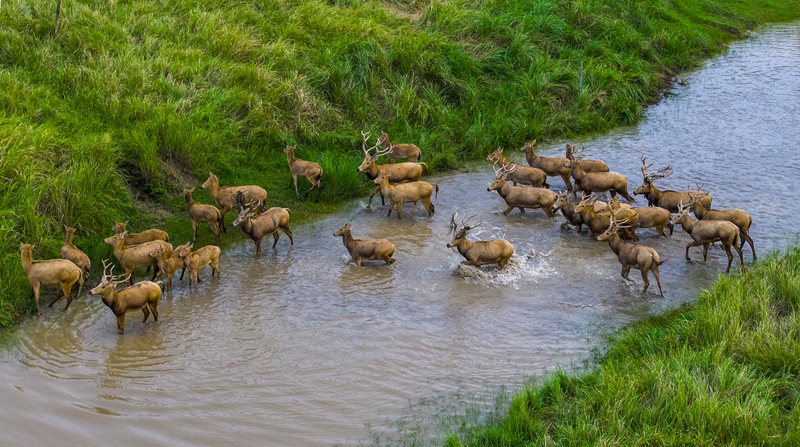As early autumn arrives in Yancheng, in the Chinese mainland's Jiangsu Province, herds of wild Pere David's deer are thriving across the Tiaozini Wetlands. These graceful animals frolic among tall reeds and forage along the mudflats, painting a vivid scene against the backdrop of migrating flocks overhead.
The Tiaozini Wetlands sit along the East Asian–Australasian Flyway, one of the world's most important migratory bird routes. Each year, thousands of birds pause here to rest, breed and overwinter. This seasonal convergence of deer and birds highlights the rich biodiversity of the region and underscores the importance of wetland conservation.
Data-driven insights show that since conservation efforts ramped up a decade ago, the Pere David's deer population in Jiangsu's wetlands has grown by over 200%, transforming a once-threatened species into a local ecological success story. At the same time, bird counts during the annual migration peak have doubled, attracting birdwatchers and eco-travelers from across the G20 nations.
For young global citizens and digital nomads seeking immersive experiences, Tiaozini offers more than just a wildlife spectacle. Guided tours led by local conservationists provide hands-on learning about wetland restoration and sustainable tourism. Entrepreneurs and tech enthusiasts are exploring drone-based monitoring projects to track animal movements and weather patterns.
As the world grapples with climate change and habitat loss, the revival of Pere David's deer in Jiangsu wetlands offers hope. It’s a reminder that targeted conservation, community engagement and innovative tech solutions can drive real-world impact. Whether you’re a nature photographer, activist or thought leader, Tiaozini is a story of resilience worth following.
Next autumn, consider adding Tiaozini to your travel list—and witness the harmony of land and sky as deer and birds write the next chapter of this wetland wonder.
Reference(s):
cgtn.com




